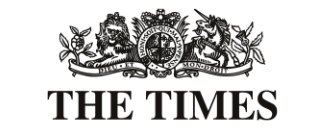Right To Light Surveyors
Concerned about a proposed development that may block the light in your home? Or maybe your neighbour’s tree is blocking your light? Find a Right to Light Surveyor to help.
Right To Light Surveyors
If you wish, you can now contact any of the surveyors listed below directly for more information, or they may contact you for more information so they can provide a more precise quote.
Find Right To Light Surveyors
Note that quotes or information provided are subject to Local Surveyors Direct Terms and Conditions. Your details are not shared with anyone other than the firms providing the quotes. If you don’t want to give your phone number please enter 0000. See LSD’s Privacy Policy.
This site is protected by reCAPTCHA and the Google Privacy Policy and Terms of Service apply.
Get an instant list of surveyors to contact
4.6
out of 5
2,431
reviews
The costs of buying a house in 2025
Beyond the purchase price of your new home, there are a number of fees when buying a house which can add more than 10% to the total bill. Owning a home also costs more than you might expect. Read on for all the costs of buying a house and running a home that you need to budget for.
Cost of selling a house in 2025
So what is the cost of selling a house in 2025? We set out what to expect in terms of estate agent fees, legal fees and other costs involved in the sale of your property.
Home Extension: where do I start?
Extending your home is a popular way to increase space and add value to your property. With the hassle and costs of moving house – from legal fees to stamp duty – the reasons to stay put and improve your existing home soon mount up. But where do you start with your extension plans?
Do I need an architect?
When you improve your home, one of the first decisions you need to make is whether or not you need an architect. It can have a big impact on the cost and quality of the building works. We look at when it is a good idea to have one and the pros and cons of working with an architect.
Find a Right to Light Surveyor
Are you concerned about a proposed and nearby development that may block your light in your home? Or maybe your neighbour’s tree is blocking your light. These experts will be able to advise you on your legal rights and produce a right to light report to support your case.
These Right to Light surveyors can also provide you with BRE daylight and sunlight assessments for planning. These assessments are normally required by the local planning authority to establish if the development will have an impact on the neighbouring properties’ daylight.
The Right to Light and Daylight surveys both measure the reduction in light but are different in that the Right to Light is a legal issue while Sunlight and Daylight Reports help planning authorities establish the impact of a proposed development on surrounding properties.
What is the difference between Right to Light and Daylight Sunlight assessments?
In England and Wales, a Right of Light is a right to enjoy your property and it is a civil matter. It’s usually granted under the Prescription Act 1832 for windows over 20 years old. An owner may be compensated for their loss of light, or in some cases, get an injunction to stop or demolish the offending development. To pursue the case the owner would need to go to the civil courts. A Daylight Sunlight assessment is used to support a planning application. It is a document required by local planning authorities to check the impact of the proposed development schemes on neighbouring properties.
Rights to Light survey: explained
A Right of Light is a right enjoyed by a property. The owner is meant to receive a specific amount of sky over a neighbour’s land. If that sky is blocked by development, which means that there is a blocking of the Right to Light, there are grounds to fix or compensate for this. The owner can apply for an injunction over the offending structure, however many people settle for compensation to ‘release’ their light.
According to Section 3 of the Prescription Act 1832, only windows that have enjoyed uninterrupted light for a period of 20 years, will be granted ‘ancient light’ status and will benefit from a Right of Light.
Natural light is recognised in law that if this is reduced to below a certain level it becomes a loss. The rule of thumb is for the natural light to light around 50-55% of the room area. There may be grounds for a claim if the room area receives less light than this. The Right of Light only considers light from the sky alone and doesn’t include sunlight.
How much does a Right to Light Survey cost?
The cost can vary case by case and is dependent on the size of the development and what is required. Fill in the form above and you’ll receive contact details for Right to Light surveyors that you can contact to discuss your requirements, get initial advice and a detailed quote.
What does a Right to Light Surveyor do?
Right to Light Surveyors specialise in assessing and managing issues related to the right to light. They can assess the current levels of natural light and support the homeowner to find solutions to minimise the impact or to get compensation.
Frequently Asked Questions
Can I use the right of light to force my neighbour to cut down their tree so I get more light in my garden?
No. You may be able to get the tree cut back if it is blocking light to a window, conservatory or glass door, as long as they have been there for at least 20 years. Even so, it’s not certain that you have a strong case as trees (and all deciduous trees in the winter) will usually let some light through, compared to a building.
Can I use Right to Light to get more sunlight in my garden?
No – the Right of Light only applies to window and door openings of more than 20 years old.
Is Right to Light a valid objection to my neighbour’s proposed extension.
No – this is a civil matter. But a report can help strengthen your case to go to the developer for compensation.
Can I get Right to Light insurance?
Developers can take out insurance to protect themselves from any financial consequences as a result of a successful claim made by a neighbour.
Daylight Sunlight survey: explained
When applying for planning permission in a populated area, the local planning authority may require a Daylight Sunlight report as part of the planning application. The assessment typically follows the BRE Building Research Establishments guidance for developers and includes limits for daylighting, sunlighting and overshadowing.













